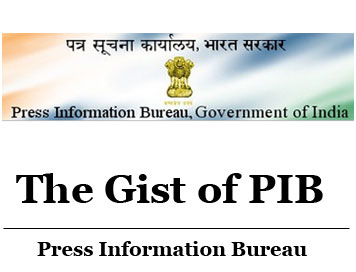(HOT) UPSC Current Affairs 2025 PDF
NEW! The Gist (NOV-2025) | E-BOOKS
(THE GIST OF PIB) National Policy for Rare Diseases 2021

(THE GIST OF PIB) National Policy for Rare Diseases 2021
[DECEMBER-2021]
National Policy for Rare Diseases 2021
- The Union Health and Family Welfare Ministry is taking measures to spread awareness about the “National Policy for Rare Diseases 2021”.
What is a rare disease?
- A rare disease is a health condition of low prevalence that affects a small number of people compared with other prevalent diseases in the general population.
- Rare diseases include genetic diseases, rare cancers, infectious tropical diseases and degenerative diseases.
- 80% of rare diseases are genetic in origin and hence disproportionately impact children.
Definition of a rare disease:
- There is no universally accepted definition of rare disease.
- These diseases have differing definitions in various countries and range from those that are prevalent in 1 in 10,000 of the population to 6 per 10,000. According to the Indian Council of Medical Research (ICMR) registry definition, “A disease or disorder is defined as Rare in India when it affects fewer than 1 in 2500 individuals”.
- So far about 450 rare diseases have been recorded in India and it is estimated that about 6-8% of the country’s population is affected by a rare disease.
Challenges associated with rare diseases:
- There are 7,000-8,000 classified rare diseases, but less than 5% have therapies available to treat them. About 95% rare diseases have no approved treatment and less than 1 in 10 patients receive disease-specific treatment.
- The field of rare diseases is very complex and heterogeneous and prevention, treatment and management of rare diseases have multiple challenges. Early diagnosis of rare diseases is a major challenge owing to a variety of factors that include lack of awareness among primary care physicians, lack of adequate screening and diagnostic facilities etc.
- There are also fundamental challenges in the research and development for the majority of rare diseases as relatively little is known about the pathophysiology or the natural history of these diseases particularly in the Indian context.
- Rare diseases are also difficult to research upon as the patients pool is very small and it often results in inadequate clinical experience. Availability and accessibility to medicines are also important to reduce morbidity and mortality associated with rare disease.
- The cost of treatment of rare diseases is prohibitively expensive. Various High Courts and the Supreme Court have also expressed concern about lack of a national policy for rare diseases.
National Policy for Rare Diseases 2021:
- To address all these challenges, the Union Health and Family Welfare Ministry approved the “National Policy for Rare Diseases 2021” in April 2021.
Highlights of the Policy:
- In the new policy, rare diseases have not been defined but classified into three groups.
1. Group 1 has disorders amenable to one-time curative treatment, including osteopetrosis and Fanconi anaemia.
2. Group 2 has diseases requiring long-term or lifelong treatment with relatively lower cost of treatment and benefit has been documented in literature, including galactosemia, severe food protein allergy, and homocystinuria.
3. Group 3 has diseases for which definitive treatment is available, but challenges are to make optimal patient selection for benefit, and very high cost and lifelong therapy, covering diseases such as spinal muscular atrophy (SMA), Pompe disease, and Hunter syndrome.
CLICK HERE TO DOWNLOAD FULL PDF
CLICK HERE TO DOWNLOAD UPSC E-BOOKS
Study Material for UPSC General Studies Pre Cum Mains
Get The Gist 1 Year Subscription Online
Click Here to Download More Free Sample Material
<<Go Back To Main Page
Courtesy: PIB

